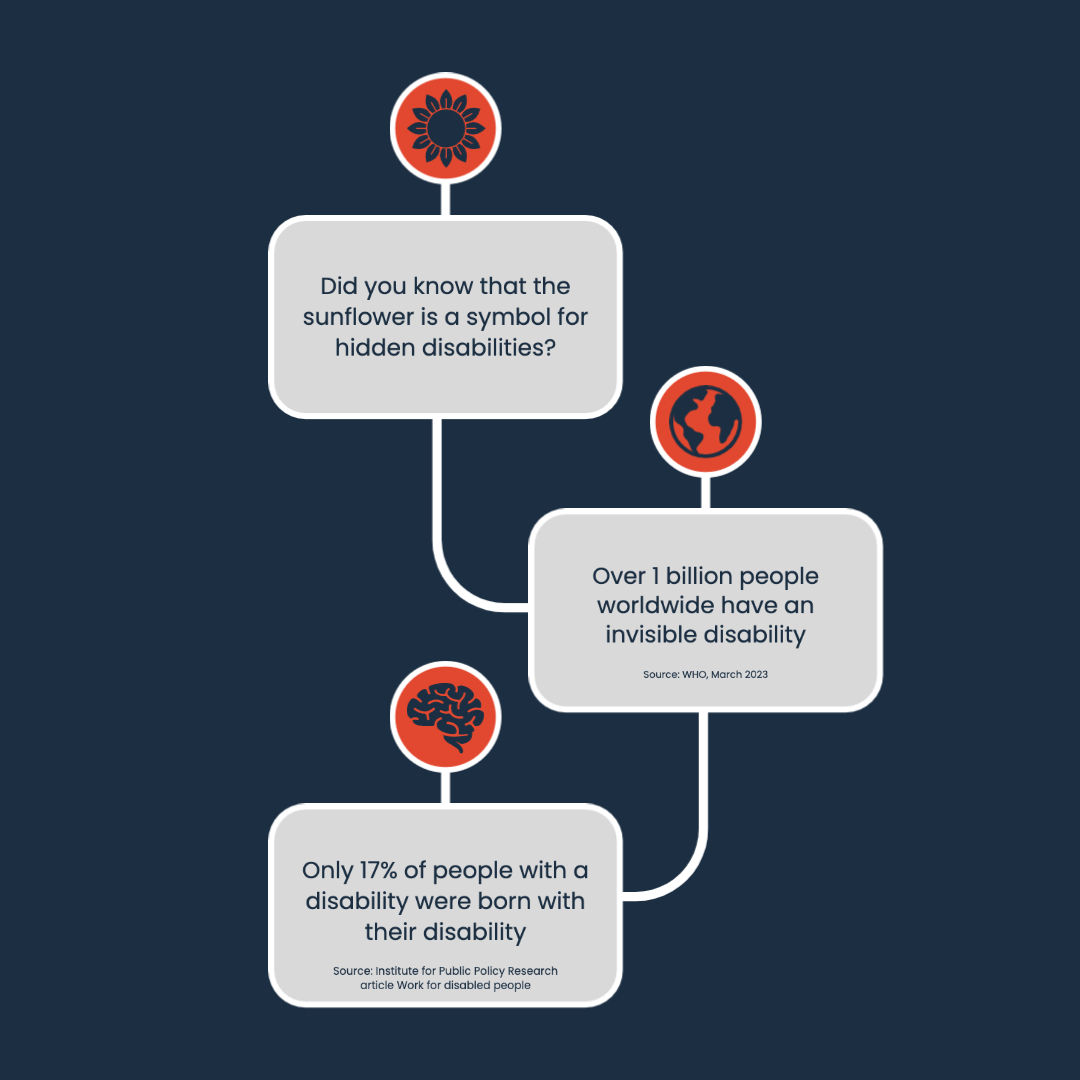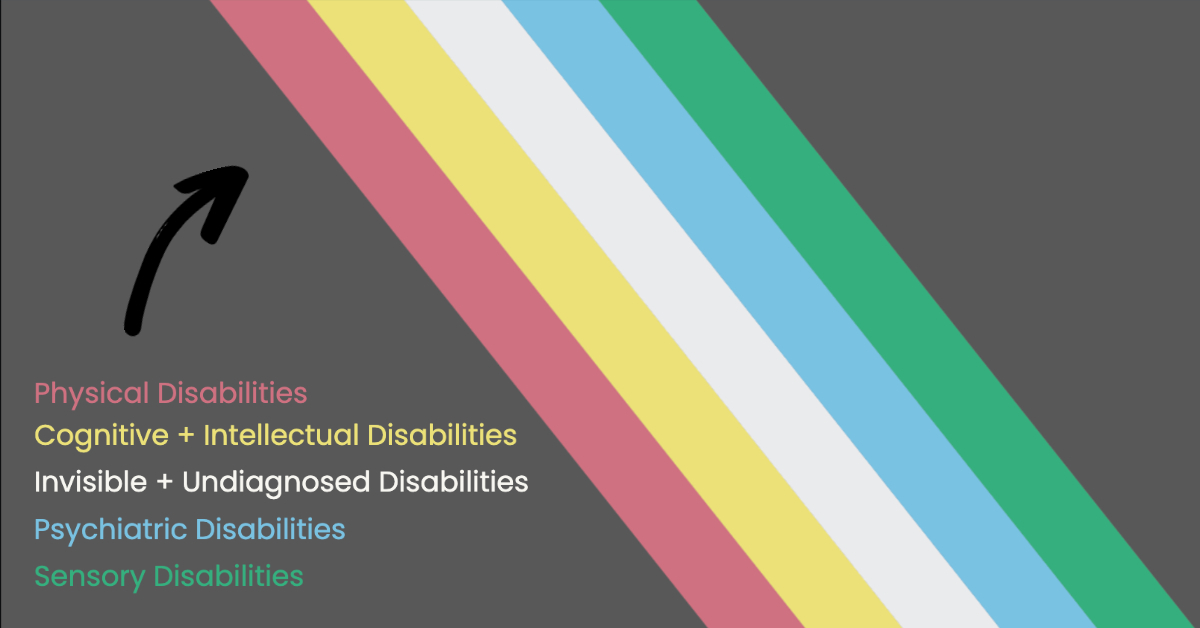As we close out Disability Pride Month, let’s take some time to explore the branch of invisible disabilities. On the disability pride flag, the white band represents those with invisible or undiagnosed illnesses. Globally, about 1 in 6 people have a disability, and 80% of those are invisible. Let that sink in for a moment. Over 1 billion people around the world are living with a non-visible disability (Source: Hidden Disability Sunflower).
But what is an invisible disability?
The term “invisible disabilities” encompasses a wide variety of conditions that can be temporary, situational, or permanent. These conditions are often not immediately obvious to others, but can impact one’s health in a number of ways—invisible disabilities can be physical, mental, visual, auditory, respiratory etc. (Source: Accessibility.com) Examples of invisible disabilities include diabetes, fibromyalgia, endometriosis, chronic migraine disorder, and more.

In 2016, the Hidden Disabilities Sunflower was founded to create a universal symbol for invisible disabilities and establish a network of invisible illness-friendly businesses, institutions, and transportation. By wearing a sunflower, an individual can discreetly and voluntarily disclose a hidden disability, alerting employees at these various involved institutions that that individual may require more time, assistance, or a special accommodation. This can ease the anxiety of disclosing your hidden health condition while still ensuring that your needs are met with empathy and understanding. (You can access a full map of the Hidden Disabilities Sunflower network here).
By fostering an inclusive and welcoming culture in our workplaces and daily lives, we can better support and accommodate individuals with invisible disabilities. Workplace accommodations often have little to no cost but can make a world of difference for employees. When we intentionally create a safe space for our employees and coworkers, we are actively broadening our understanding of disability and including more people in the conversation of inclusion.

